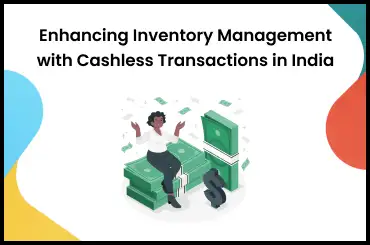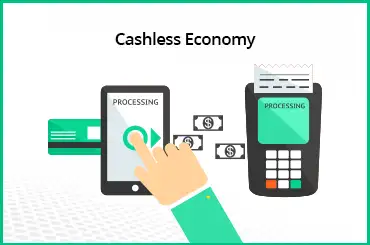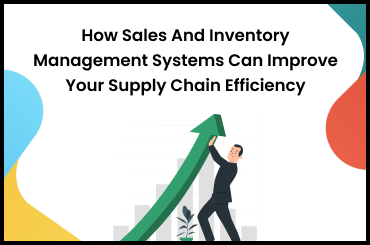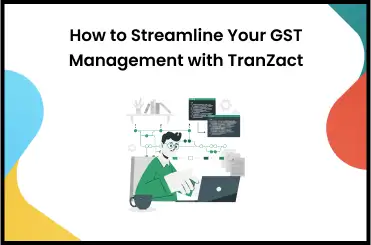When you're aware of what is dropshipping, you can manage your logistics operations better. Dropshipping can be game-changing for new business models and companies to outsource the handling, management, and shipping of products without the requirement of physical inventory.
It can act as an ideal alternative model to tackle customer orders. But, there are various factors to consider before selecting dropshipping as an approach to building a successful business. Take a look at the day-to-day mechanism, tips, how to use it, and other factors revolving around dropshipping.
What Is Dropshipping?
Dropshipping is an order sales method allowing individuals and companies to sell products without the requirement of a physical store i.e. via an online store. This order fulfillment method eliminates the need for products in inventory.
With its right adoption, it gives an edge to the business to sell the products via third-party manufacturers and sellers who take the responsibility to cater sales and ship to the customers. It involves outsourcing procuring, shipping, and storing goods and services to reduce the investment costs i.e. overhead costs, and improves business efficiency.
Dropshipping guides companies to start their sales deliveries without the need for inventory or direct sales order completion. It allows businesses to produce and sell a wide variety of goods and drives other priorities for them including online and offline presence, marketing, sales, branding, and other business elements to expand their business manifold.
What Is Dropshipping Business Model?
Dropshipping is an online business model where the company owner outsources, which means it takes the help of a supplier to handle shipping and order sales fulfillment based on the order fulfillment mechanism. It fosters product promotion and online presence.
When a consumer creates an order with the company, the order details are sent to a supplier or manufacturer who develops the products adhering to the safety and quality measures of the company and delivering the products to customers.
The merchant may lose control over the fulfillment process. But, the company owner and the supplier can create agreements to state responsibilities between customer service, order completion, and shipping to customers.
Example - An online store for skincare products like sunscreens and moisturizers, takes orders from customers in its name and hires a supplier to handle the completion and timely shipping of products.
How Does Dropshipping Work?
The dropshipping mechanism works by considering two elements in the process - Front-end and Back-end processes. In the following section, the exact logistics for dropshipping are divided into two segments to ensure a better understanding of what is dropshipping -
- Front-End Processing
It involves the face of the store or e-commerce website. It is the page where the customers interact and communicate with the merchant to buy goods and services.
Once the order is placed, the customer receives the order confirmation and gets timely updates for shipping. The "My Orders" section includes all the relevant details about the order with step-by-step delivery details.
- Back-End Processing
This section deals with the merchant, the company's core solutions, and the production process. The merchant signs the required agreement with the drop shipper. When the customer places an order, the seller receives the order details. The seller forwards the order details to the drop shipper who fulfills and ships the order to the customer.
Key Things in Drop Shipping Model
If you're wondering how to start dropshipping, read this section. There are three players involved in the dropshipping process. They work with each other to ensure that the business flourishes and attains the levels of development goals defined by the merchant.
There are multiple factors affecting the business including supplier hampering products during production, difficulty in tackling diverse suppliers and inventory, and ensuring optimum qualities of order fulfillment. The key players in dropshipping model help you understand what is dropshipping; their key roles and responsibilities are discussed below -
- Seller of Record
Merchants are the key managers catering to the customer's demands and handling the business marketing, sales, and brand face. Dropshipping begins with sellers. Sellers of Record (SoR) are in direct touch with the customers.
The merchants are involved in various operations like deciding the variety of products, costs, quantity, applicable discounts, and taxes on the product sales. Customers buy the products from the merchants due to their market value and the quality they provide.
- Wholesalers
Wholesalers are involved in the supply chain as they buy from manufacturers and sell the products to other shop owners or retailers. Wholesalers are not directly engaged with end customers, but they provide drop shipping facilities to retailers and work as middlemen.
- Manufacturers
Manufacturers are responsible to develop products, comply with the stated guidelines, and provide the optimum level of products to wholesalers, retailers, and private individuals looking for bulk amounts. The only drawback is that bulk orders depend on the minimum limit set by the manufacturers which can pose a barrier to scaling up the business.
Pros and Cons of Dropshipping
E-commerce businesses, especially must recognize the advantages and disadvantages of the dropshipping business to match the goals and ideals of merchants. Take a look at the pros and cons of dropshipping to make informed decisions.
Advantages of Dropshipping
- Overhead Costs
Drop shipping can save overhead expenses by eliminating the need to store or ship merchandise. Since businesses are not required to keep product storage, they can save on carrying and stockroom costs.
- Reduced Risk
Eliminating inventory costs lowers the possibility of financial loss by losing goods, placing excessive orders, or lack of goods in inventory.
- Multi-Channel Operations
Dropshipping can be utilized to sell goods directly on your website, through another business, or on social networks.
- Investment or Initial Costs
Dropshipping allows entrepreneurs to establish a business without having to invest in premises or resources.
- Wide Variety of Products
You may sell a wider variety of things and boost your earning potential without pre-purchase inventory.
- Scalability-Level
Businesses can accept more orders without raising inventory by partnering with suppliers.
- Operational Facility
Dropshipping allows businesses to fulfill orders from anywhere, giving them the freedom to work remotely whenever they want.
- Flexibility
Through drop shipping, companies may test out various products without putting their capital at risk.
- Easy-to-Start and Manage
Dropshipping requires basic infrastructure such as the creation of a website, a reliable supplier, marketing expertise, and an appealing niche. Fulfillment does not require a warehouse or connections to delivery companies because the supplier will handle everything.
- Timeline for Fulfillment
Dropshipping removes the need for several points of contact for order selection, packaging, and shipment with the seller.
Disadvantages of Dropshipping
- High Competition
Due to their low entry barriers, dropshipping businesses are susceptible to competition from larger businesses that can reduce their markups to provide the lowest pricing. This means that potential buyers can get the same item cheaper elsewhere.
- Legal Liabilities
Dropshippers should be careful that sellers may be fraudulent and use trademarked logos or other intellectual property illegally. This may be avoided with a strong Dropshipping Agreement Contract.
- Difficulty in Building a Brand
Established brands tend to benefit more from dropshipping than new ones, as customers often prioritize the brand of the product over the shopping experience. As a result, drop shippers must acknowledge that the credit for their efforts ultimately goes to the brand they are selling.
- Profit Margins
Product differentiation enables firms to compete more aggressively on price, reducing profit margins.
- No Control Over the Supply Chain
Dropshipping is a type of e-commerce in which store owners rely on the supplier but must still contact their consumers directly. This might result in communication delays and poor reviews, potentially leading to the downfall of the business.
- Complicated Customer Service
The drop shipper is in charge of client satisfaction and customer support if something goes wrong during the fulfillment process. Thus, they must ensure timely product delivery and communicate with the merchant for proper guidance, otherwise, the process can get complicated.
The advantages of dropshipping overcome its potential limitations. Make sure to check the aforementioned details to maintain a balance system.
How to Use Dropshipping Effectively
Make sure to choose the dropshipping facility cautiously to make the most of it. The key to success in this business depends on the wholesalers and manufacturers. The knowledge of market demand and supply trends, and the product availability and scalability in establishing a strong partnership are key for the venture's success.
Here are some tips and guidelines to make dropshipping efficient -
- Market research
Dropshipping can be utilized to mitigate risk when testing new products and conducting market research. It can also provide an accurate estimate of how much it will sell for, which is useful for experimenting with new product categories.
- No requirement for goods overselling
Dropshipping is an excellent way to protect against market fluctuations and harsh circumstances. It saves money without sacrificing sales and is especially valuable throughout the holiday season. It also protects against unexpected shipping delays.
- Well-equipped shipping mechanisms
Dropshipping can help you save money on shipping and fees, experiment with new locations, and conduct market research. It is also excellent for market research and experimenting with different places.
- Measures for high-maintenance products
Drop shipping high-maintenance items, huge, heavy, fragile, valuable goods may be more profitable than storing them yourself, but it may not make sense to pay additional storage and delivery fees unless the company specializes in these types of products.
- Add value
Successful small businesses understand that it is not only the product that is crucial, but also the insights, information, and solutions that they offer. Get insights on the best dropshipping niches and work to develop a unique product. Another way is to compete in the market via competitive prices.
- Prime focus on marketing, sales, and SEO
One of the key issues faced by companies is the lack of attention and traffic directed to their online store or website. Make sure to develop and maintain SEO, sales, and marketing, and attract more eyes to the website. You can also use guest posts, ghostwriting blogs, customer testimonials, and reviews to enhance the reach, lead SEO, and traffic generation to create potential customers.
- Provide excellent customer service
Customer satisfaction and happiness are important for any business. Companies can develop dedicated grievances forms, and take advantage of testimonials and feedback forms to get reviews from customers. It is their responsibility to prepare for refunds, compensations, and complaints that may be imposed on them and revert to them professionally and with a positive outlook.
- Need for a long-term perspective
Commitment, dedication, and regular investments are crucial for the success of the dropshipping business. It takes time, effort, and consistency to gain results. The initial phase i.e. the first few months might be daunting for the business to understand and upkeep the customer needs. Be mentally prepared to handle the challenges and hurdles and take it one step at a time.
- Secure a supplier
Working with a dropshipping supplier requires great caution because communication is critical. Online platforms and dropping sites are online resources for locating and engaging with new manufacturers and suppliers and learning about their manufacturing skills is vital in case of expansion.
- Build an e-commerce website
Companies can utilize e-commerce platforms to create an online store, configure checkout options, and create a customer care website. It does not require any technical skills to get started, and there are numerous apps available to help enhance sales. Even companies with high levels of budgets must begin with simple plug-and-play solutions to get the most out of dropping services.
- Understanding chargebacks
Chargebacks might be the result of fraud, oversight, or misrepresentation, therefore it is critical to take swift action and offer proof of the initial transaction, tracking data, and a wholesale packing slip.
- Tackling with returns
Merchants must be well informed about the returns in dropshipping. Develop the return policy keeping in mind how a return is processed by the customer - the consumer contacts the supplier, receives the item return number, returns a product, the supplier reimburses the account for a wholesale price, and the supplier reimburses the customer for the full amount.
How to Choose the Best Dropshipping Suppliers
Finding the right dropshipping supplier may become a daunting task without the right guidance. Take a look at these methods below to choose the best dropshipping supplier for you.
- Take a look at supplier directories
You can sign up with a supplier directory, and use paid or unpaid third-party applications, software, and websites to narrow down your options. This facility is useful as the applications filter out the directories for better research.
- Contact manufacturers and suppliers directly
Try to find a manufacturer who has dealt with your niche and products. Search online or contact other suppliers in your sector and community to find the best match.
- Participate in conferences and trade shows
Trade shows are excellent for finding wholesalers, manufacturers, and suppliers in your niche. Check out the latest trends and technologies utilized by them to make informed decisions.
- Agreeable pre-order fee
Choose a provider who charges reasonably and agrees on a price that allows you to make a profit. They will be in charge of upholding stock and supplying products, therefore, it is critical to select the right supplier.
Leverage Dropshipping for E-Commerce Growth!
What is dropshipping is a vital question that an emerging e-commerce business must ask. Dropshipping can be an attractive business model for those looking to start an online store without the need for significant upfront investment in inventory.
However, it is important to carefully consider the pros and cons of dropshipping and take steps to mitigate its challenges, such as finding reliable suppliers and managing customer expectations. By approaching dropshipping with a well-informed and strategic mindset, entrepreneurs can build successful and sustainable businesses in the ever-evolving world of e-commerce! TranZact is an automation platform that centralizes your business operations on a cloud-based platform, enabling you to carry out your dropshipping and e-commerce activities with ease!
FAQs on Dropshipping
1. How do I incorporate dropshipping into my business?
Choose a niche or product type, and research product competitors, find drop shipping suppliers in your area and on online mediums to handle the supply and shipping of products while you can focus on creating your brand image.
2. What are the advantages of dropshipping?
Some of the advantages of dropshipping include product diversity, flexibility in the location of operations, saving up time and money, and incurring low investment.
3. Is dropshipping legal in India?
Yes, dropshipping is legal in India and a widely used order fulfillment model by new entrepreneurs to have the edge over their businesses.
















